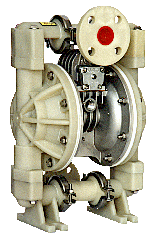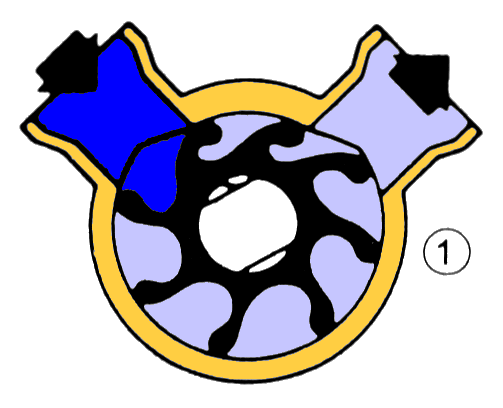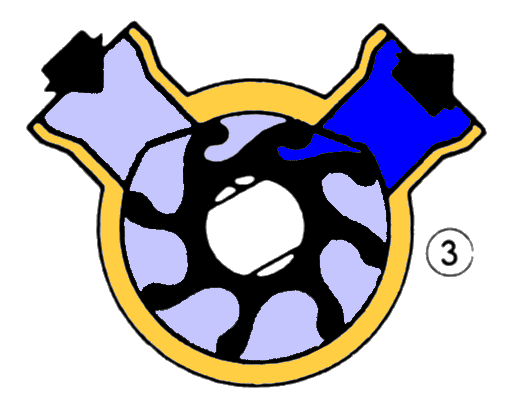 |
- Low cost - Ideal for batch transfer operations - Low maintenance - economical - Wide range of material options - Submersible - Self priming - Dry running capability |
PUMP TYPES, FEATURES & BENEFITS |
CENTRIFUGAL | REGENERATIVE TURBINE | GEAR | PROGRESSIVE CAVITY | DIAPHRAGM | DOUBLE DIAPHRAGM | ROTARY VANE | FLEXIBLE IMPELLER | SYRINGE | DRUM | PISTON/PLUNGER | PERISTALTIC | SUMMARY OF POPULAR RANGES
- Magnetic drives for leak free pumping
- Multi stage models for high pressures
- Stainless steel models for chemical and food applications
- Ideal for liquid transfer or recirculation
| REGENERATIVE TURBINE |
- Higher pressure capability than standard centrifugal
- Ideal for low flow/medium pressure applications
| GEAR |
- High pressure capability
- Minimal fall off in flow with increasing pressure
- Magnetic drives for leak free pumping
- Wide range of materials including stainless steel and PTFE
| PROGRESSIVE CAVITY |
- Gentle pumping action
- Pulse less flow
- Broad range of flow & pressures
| DIAPHRAGM |
- High pressure capabilities
- Wide range of wetted materials for perfect chemical compatibility
- Easily integrated into any process system
| DOUBLE DIAPHRAGM - AIR DRIVEN |
 |
- Low cost - Ideal for batch transfer operations - Low maintenance - economical - Wide range of material options - Submersible - Self priming - Dry running capability |
| ROTARY VANE - LIQUID |
- Self priming
- Ideal for applications requiring continuous high flow at high pressure
| FLEXIBLE IMPELLER |
- Self priming
- Smooth pumping action
- Materials choice for good chemical compatibility
- Dry running capability
These pumps can be made so that they can be easily stripped down for cleaning or alternatively can readily withstand cleaning in place procedures at temperatures of up to 90°C. Hence the pump is suitable for a host of applications, including raw materials transfer, drum emptying, recirculation, filling machines, mixing and dosing, filtration, processing and sampling and can be used for food products such as batter mix, cake and pie filling, yeast mix, sauces, slurries and pastes.



Flexible Impeller Pump Principle - At the start of the pumping process fluid is drawn into the impeller as the impeller fingers are allowed to extend outwards increasing the size of the cavity between fingers (1). The entrained fluid is then passed to the discharge port, transported between fingers of the impeller (2). At the discharge port the fingers of the impeller are deformed by housing to squeeze the fluid from the respective cavity (3).
The flexible impeller pumping principle offers a gentle pumping action which can handle delicate and shear-sensitive fluids, as well as thin and viscous liquids, yet will not break down soft solids. Neither is the impeller damaged by hard solids. An additional benefit is that the pump is self-priming and will operate above or below liquid level. It can start from dry and will purge pipes without creating air locks.
| SYRINGE |
- Very accurate flow rates, typically ±0.5%
- Very repeatable flow rates, typically ±0.2%
- Multi channel capacity
- Pulse less flows
| DRUM |
- Ideal for decanting and transfer from drums
- Hand or mechanically powered
- Large material choice for perfect chemical compatibility
- High viscosity models
| PISTON / PLUNGER |
 |
- Very high pressure capability - Excellent for metering applications
|
| PERISTALTIC |
- No valves or seals to fail
- Economical to run
- Wide range of tube materials and sizes
- Multi channel capacity
- Pumps gasses as well as liquids
- Can be used for dispensing, metering, dosing or simple transfer
- Easily integrated into any process system
- Ideal for corrosive and shear sensitive liquids
*when uncorrected